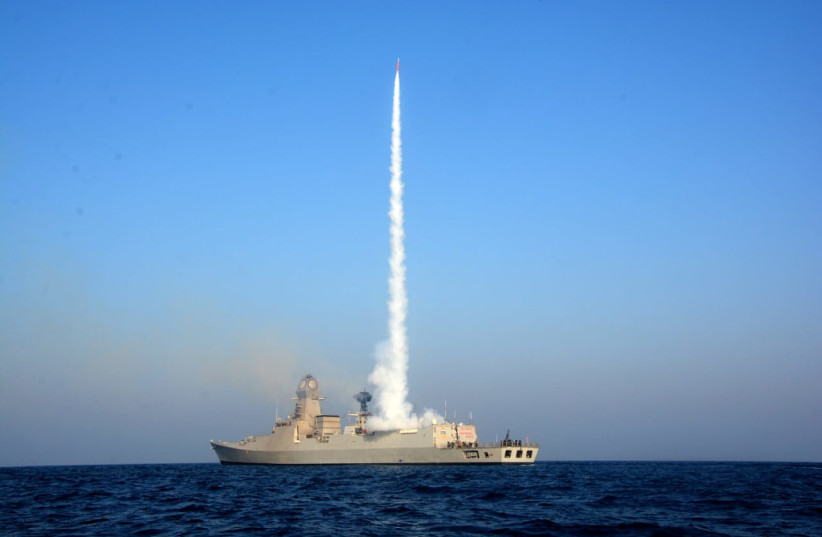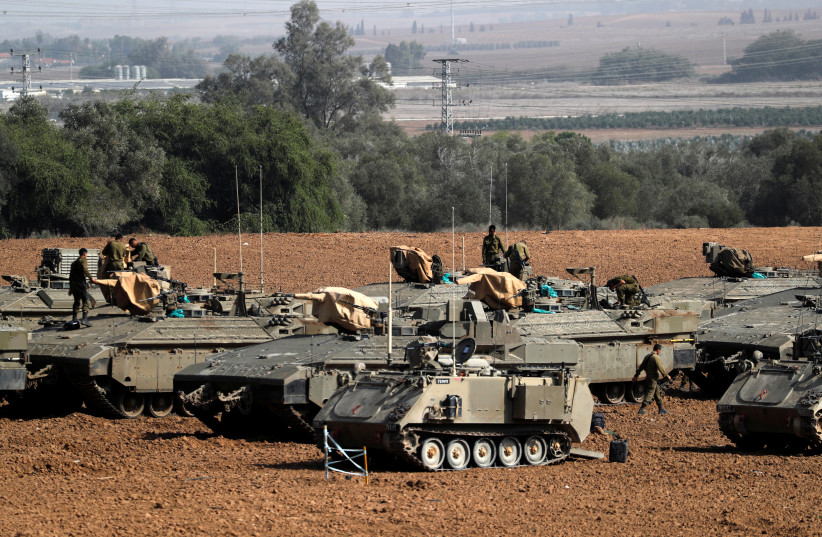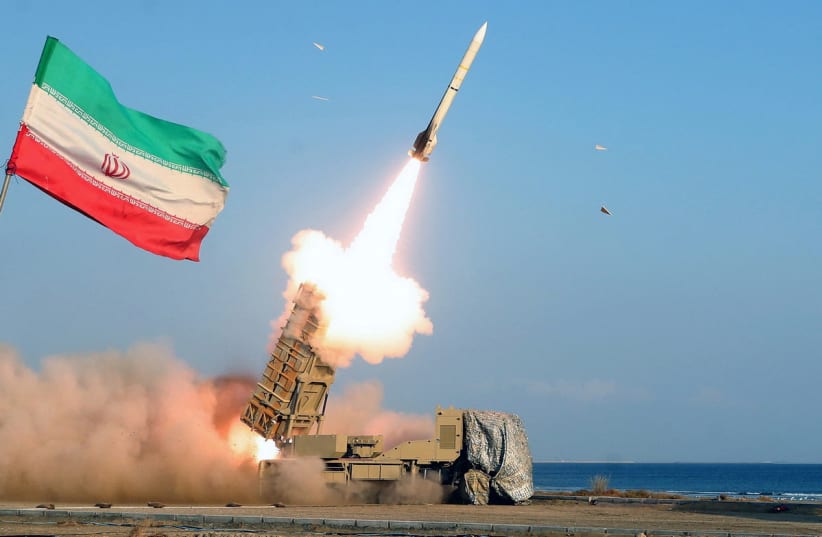A new report by the Stockholm International Peace Research Institute (SIPRI) shows that military spending around the world is rising rapidly.
According to their report, “total global military expenditure increased by 3.7% in real terms in 2022, to reach a new high…military expenditure in Europe saw its steepest year-on-year increase in at least 30 years. The three largest spenders in 2022 - the United States, China and Russia - accounted for 56% of the world total.”
The report reveals interesting details about spending in the Middle East. However, the details may not tell the whole story of what’s happening in the region.
The bigger picture of Middle East military spending
Military spending is one way to compare countries in the Middle East, and globally. However, countries like Iran may appear to spend less, but their threat across the region nevertheless grows because of how their spending is leveraged. One Iranian precision-guided munition in the hands of a militia in Syria, for instance, is a threat that can’t be met by simply sending one similar munition against it, rather one weapon like that has to be confronted with a lot of platforms and soldiers and intelligence on the other side, meaning Iran gets more “bang” for the buck from its spending.
First, a look at the known facts. SIPRI claims that Saudi Arabia is the fifth largest military spender, spending some $75 billion last year. Supposedly this puts Riyadh above the UK, Germany and France. Al-Monitor looked at the numbers and put out a list of spending by country in the Middle East. Saudi Arabia spends $75 billion, while Israel spends $23 billion, the report says. Then comes Qatar and Turkey and then Algeria, Kuwait, Iran and Oman. It’s not clear why the UAE is not mentioned, but the UAE also spends a lot on defense.


The conclusion some have drawn from this is to portray Iran as not much of a threat because its spending is supposedly less than other countries in the region. “I bet most Americans don’t have a clue that Iran spends a third of what Israel spends on the military and less than a tenth of what Saudi Arabia spends. And yet the Iranians are continually presented as a scary military threat to both their neighbors and to us - to justify even more military spending,” tweeted MSNBC host Mehdi Hassan.
One interpretation of data on military spending is to simply add up the amount countries supposedly spend and then make a comparison. However, this doesn’t seem to account for a lot of other factors. For one thing, there is purchasing power, one country might be able to maintain military units and make weapons locally for much less cost than another cost. Western countries tend to overspend on military items.
What that means is that when countries like the US decide to buy new platforms, like a new warplane or build a new ship there are always massive cost overruns. In some cases, western countries will spend billions on a program and only build a few exotic weapon systems. Consider the fact that the large surveillance drone known as a Global Hawk, which looks like a flying version of a large beluga whale, costs up to $200 million in some formats. In 2020 one of these expensive drones was shot down by an Iranian air defense missile.
Western nations are money wasters
The West also tends to waste money on systems they don’t even use. For instance, the US built a bunch of Littoral Combat ships that, according to a new article at The Drive, the US now wants to sell off six of the ships. When we look at defense spending then we have to factor in a few issues. First of all, Western defense spending is always going to be very high and they don’t get as much bang for the buck as countries like China.
They waste billions on programs and due to a variety of reasons, their defense procurement is slow and has cost overruns and they are almost always overbilled by defense companies. That means when you see the amount the US spends on defense, you could probably just cut that number in half and ascribe a lot of the spending to things that don’t really end up in the actual platforms and things the US is acquiring. In short, while it’s not clear how much this is the case, a dollar spent in China on tanks, probably buys “more” tanks, than a dollar spent in the US. Is the Chinese tank better? Probably not. So you can get more tank, but Western systems like the Global Hawk do a lot more than other drones. What that means is one US Reaper drone is worth more on the battlefield than a cheap Iranian drone.
So how do you quantify all that in the Middle East context? It’s entirely plausible that while Saudi Arabia appears to spend more, it doesn’t actually get as much out of that spending as some other countries. Turkey appears to spend less but Ankara probably gets a lot more out of what it invests in its defense industry. Israel also probably gets more out of what it spends than some Western peer militaries.
Now that we understand that dollars spent in Saudi Arabia are not the same as dollars spent in Iran, it’s worth asking what these countries can accomplish with their weapons systems. Iran is involved in building drones that threaten the region and which it exports to Russia. Drones are flown from Chabahar and threaten commercial ships in the Gulf of Oman. Drones are also based in Syria and Iran has used drones and rockets to strike at US forces and threaten Israel. Iran has also moved missiles to Iraq and moved munitions to Hezbollah in Lebanon. Iran also armed the Houthis in Yemen.
Iran’s power rests on its proxies and militias. These may not require a huge financial outlay. For instance in Iraq the pro-Iranian militias under the umbrella of the Hashd al-Shaabi, receive salaries from the Iraqi government. That means that in essence, Iran outsources its defense spending to Iraq. In Lebanon, Hezbollah received funds from a variety of sources, including illegal drug trade and other corruption that stretches to West Africa and South America. Iran has thus outsourced defense spending on Hezbollah to others. Hezbollah could be described as being the equivalent of several divisions of forces.
So what is one US Marine Division worth in terms of equipment and spending? What does it cost for Israel to maintain the Golani brigade?


Comparing Iranian defense spending to Israel’s maybe comparing an octopus to an apple, not only are they different, they aren’t comparable. When Iran spends a dollar on defense its official military, like its army and navy, is left starved of resources. However, its IRGC and its militias threaten the whole region. Iran’s ostensibly lower defense spending actually reveals how dangerous it is with only that amount of spending.
Another factor in analyzing spending is that it’s not known how much these regimes really spend. Iran is not a transparent regime. It’s not likely we will ever know all the details of how Iran develops weapons and how it spends on its defense industry, especially the major threats such as the nuclear program, the ballistic missiles and drones, as well as precision-guided munitions.
